Moon Monday #190: On the varied importance of the Chandrayaan 3 rover, and more mission updates
Grab some tea, coffee, or beverage of your choice because this week’s Moon Monday is a sci-tech deep dive! 🌝
Chandrayaan 3 contributes to learning our Moon’s origin and evolution
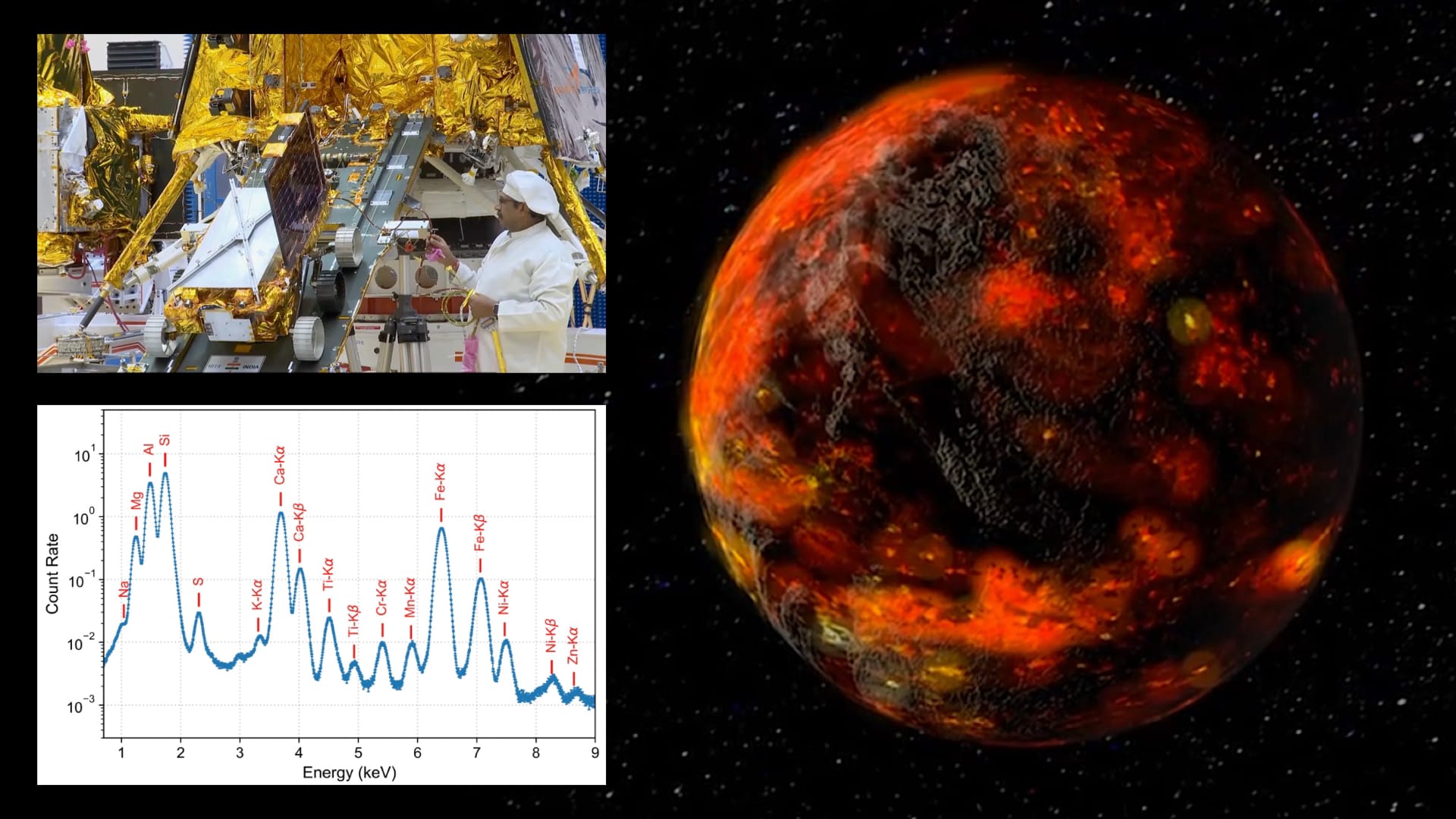
The first ever ground-based measurements of high-latitude lunar soil and rocks made by the Chandrayaan 3 rover’s Alpha Particle X-ray Spectrometer (APXS) instrument have reinforced the scientific hypothesis that our Moon formed fully molten about 4.5 billion years ago. This key mission finding published in Nature by a group of ISRO-affiliated scientists is based on the detected elements and their abundances, from which mineral composition of the Moon’s crust can be inferred, and it’s largely similar to the crustal measurements made in the Moon’s equatorial and mid-latitude regions by past landers.
Interestingly, the Chandrayaan 3 rover Pragyan (‘wisdom’ in English) also detected slightly higher quantities of heavier minerals than elsewhere on the Moon, which scientists think must’ve been excavated to the surface from deep within the crust and/or the mantle by a gigantic past impact (geologically) shortly after our Moon’s formation, thereby lending credence to our current understanding of how Luna evolved as well.
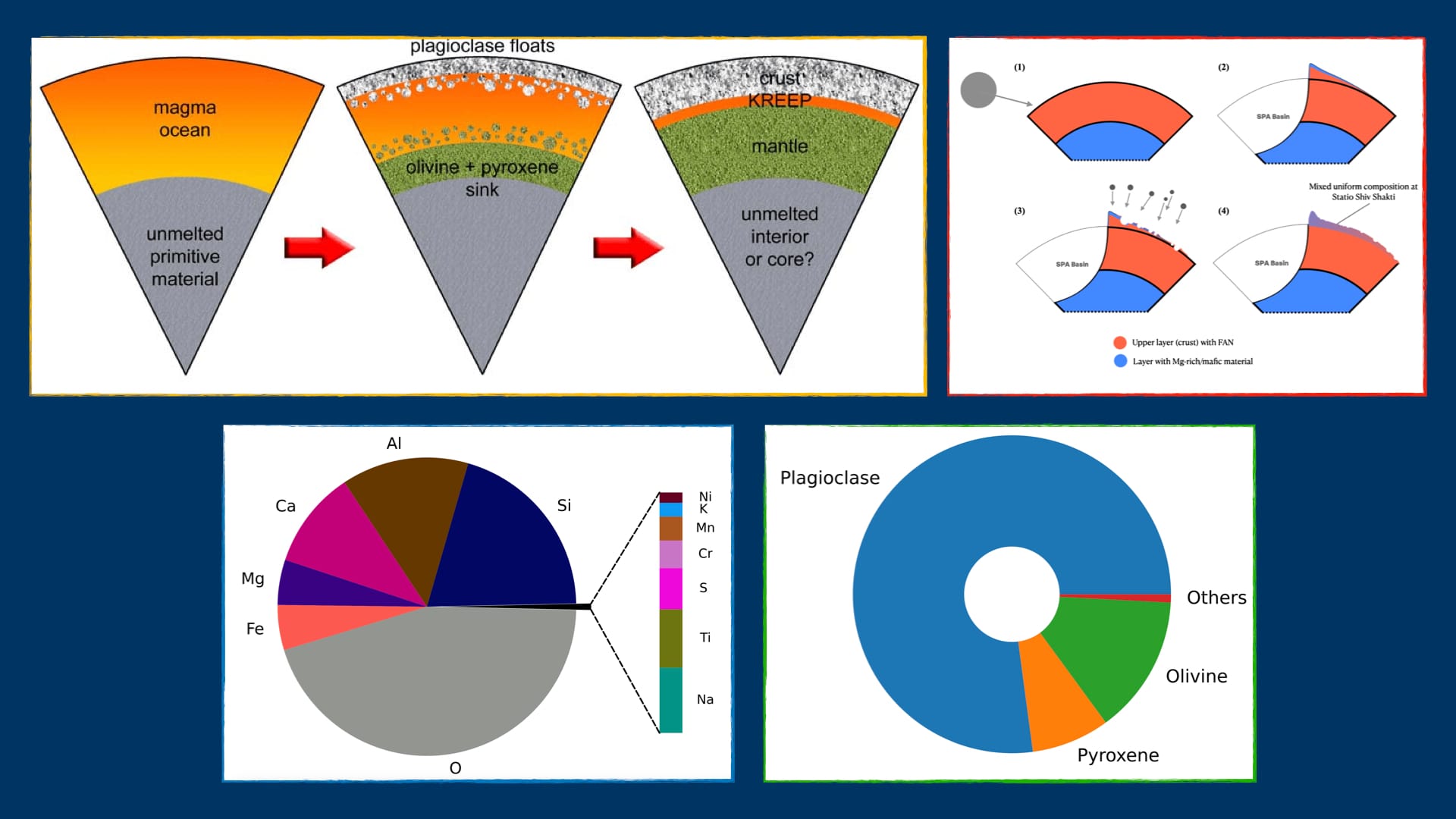
The varied importance of these findings
The ISRO-affiliated PRL institute, which led the development of the Pragyan rover’s APXS instrument, has many more details on their website. And so instead I’d like to highlight the importance of this work beyond what is already conveyed and covered by ISRO briefings and the media.
- While Pragyan’s findings may have been similar to past missions, the fact that the elemental measurements come from a unique region on the Moon is important. Had the rover’s APXS measured a sufficiently different ground truth, it would’ve substantially changed our understanding of the nature and extent of the magma ocean thought to envelop baby Luna. For example, factions of scientists have continued to counter-hypothesize that our Moon was either only partially molten (PDF) after its formation or that the lunar crust didn’t solidify homogeneously enough (PDF) as otherwise suggested by dominant global magma ocean models. The measured compositional ground truth from Chandrayaan 3 is thus uniquely important in casting a metaphorical wide net across the Moon.
- Chandrayaan 3’s ground truth measurements will also serve as a unique calibration point for orbital measurements of high-latitude and sub-polar regions on the Moon, and in some cases fill-in for polar sites too. Nearly all previous orbital observations of these regions interpreted data based on extrapolations from past missions that landed far from these regions.
- Pragyan was India’s first planetary rover. As such, its traverse path was optimized heavily for engineering safety than scientific return, more so than your typical tradeoff in a planetary science mission. Furthermore, due to the team facing more roving difficulties than expected amid the high-latitude lunar environment and uneven local topography, Pragyan roved about 100 meters from the lander, which is shorter than the originally expected drive of 300–400 meters. There’s no doubt that more elemental measurements from distinct areas in the landing region would’ve increased Chandrayaan 3’s scientific oomph. But the apt way to view Pragyan is to consider it the Indian analog to NASA’s first rover on Mars, Sojourner, which demonstrated foundational roving technologies based on which the agency iterated and sent increasingly ambitious Mars roving explorers all the way up to the sophisticated Perseverance. With India’s lunar landing and roving foundations set, the next set of increasingly complex Moon missions from ISRO should be very exciting from a scientific standpoint.
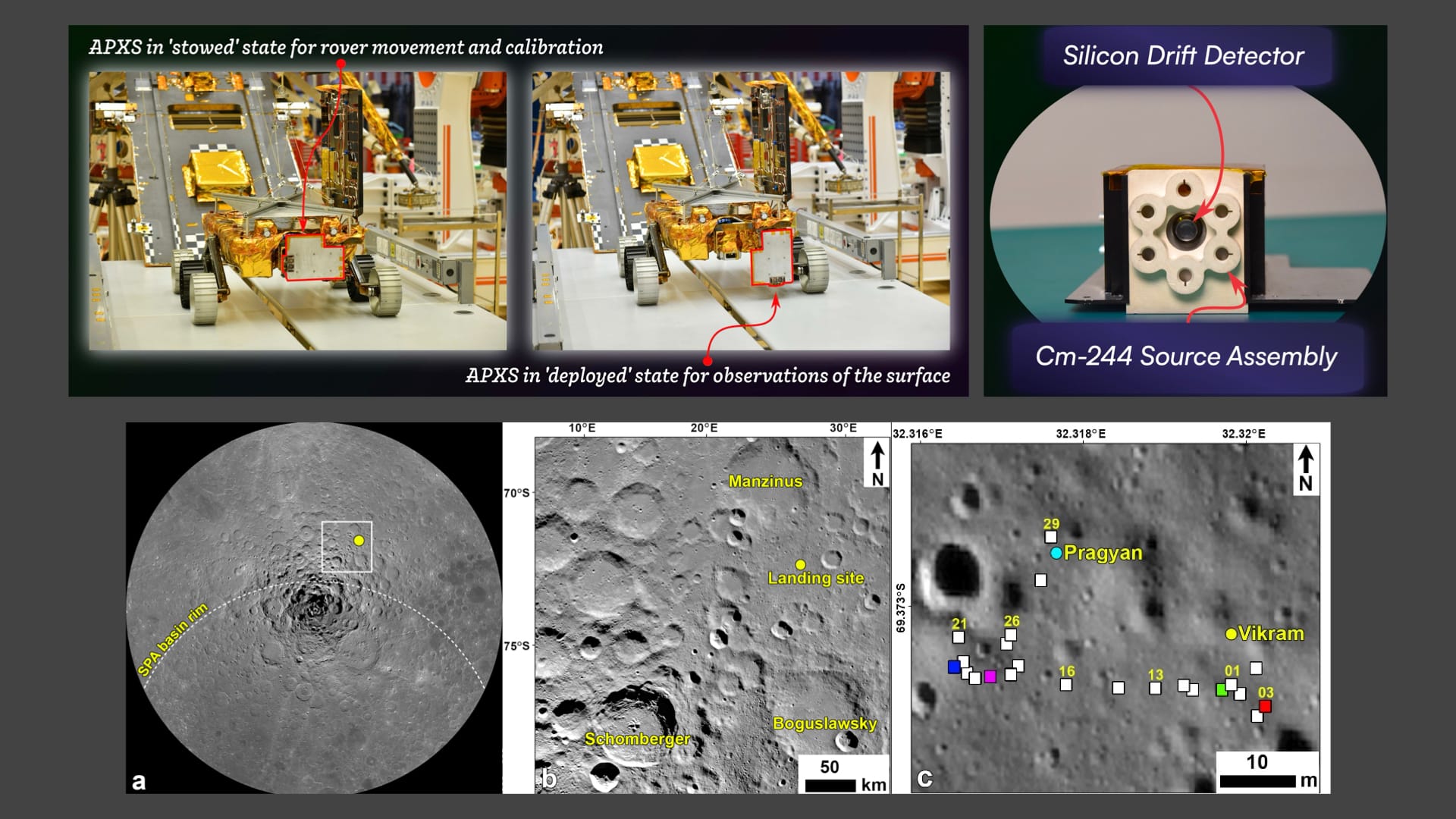
- The Pragyan rover’s APXS instrument (webpage and PDF) had to overcome many challenges before it could fly to the Moon. It’s a miniaturized X-ray spectrometer weighing a mere 0.7 kilograms. The rover itself is a micro one, weighing only 26 kilograms compared to the beefier rovers that Russia and China have sent before. The principal investigator of APXS, Santosh Vadawale, previously described to me the key challenges in realizing the instrument, saying: “For APXS to work, it has to be within 5 centimeters of its target. It took multiple design iterations to make such a mass-constrained instrument deployable without a traditional robotic arm.” ISRO’s solution was to mount the instrument horizontally on the rover’s front looking at a calibration target, and then rotate it by 90 degrees during stops to study the material below it. Procuring the radioactive Curium-244 source for APXS was another challenge. Vadawale noted that it was “available only from Russia, even for NASA’s Mars rovers needing the same”. The APXS lead engineer M. Shanmugam had added that “its procurement started in 2010, and took about 7 years.”
Many thanks to The Orbital Index, Dany Waller and Narayan Prasad for sponsoring this week’s Moon Monday. If you love this curated community resource too, join them and support independent writing and journalism.
More Chandrayaan updates
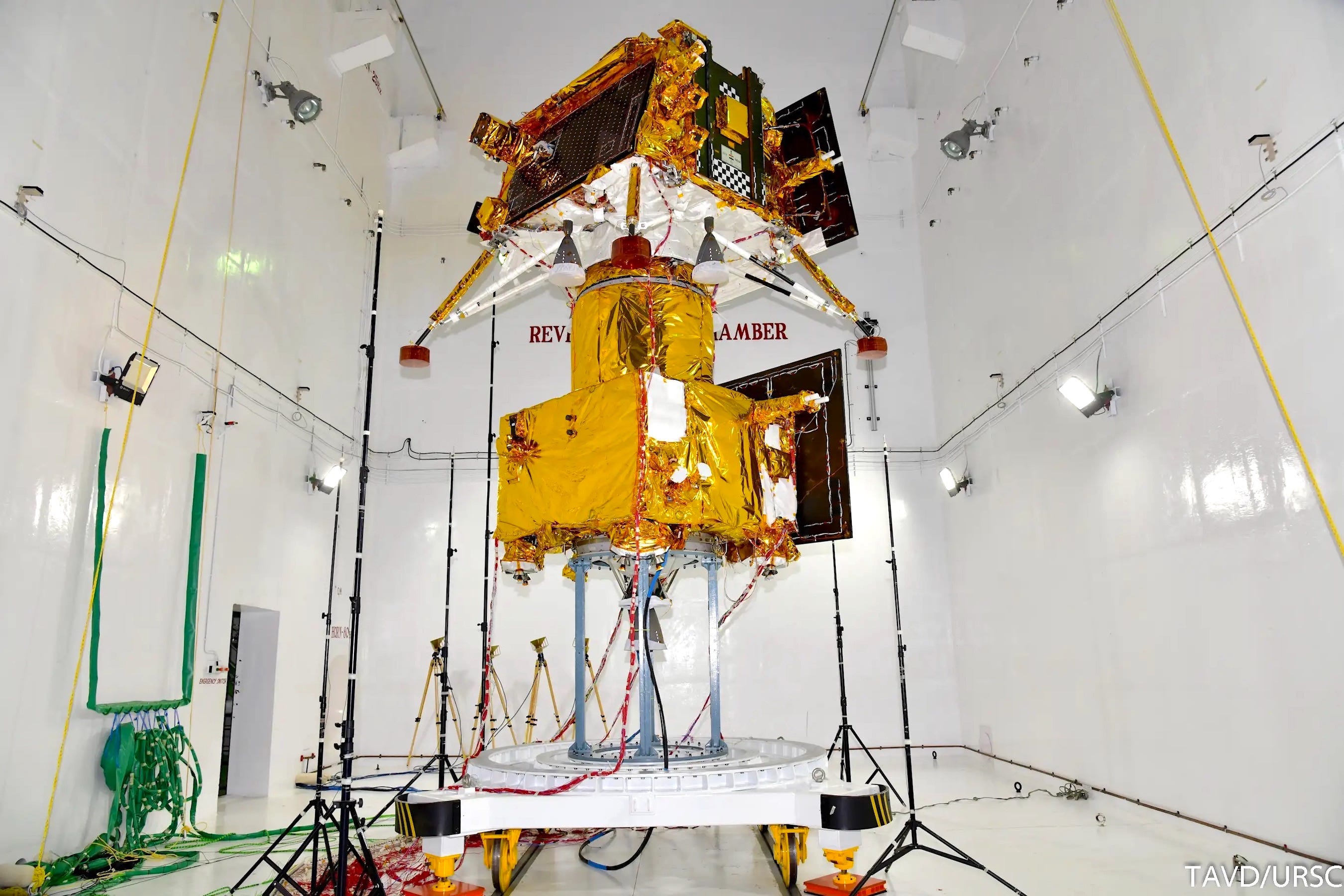
- Research results from other Chandrayaan 3 instruments should follow soon. In the meanwhile, a year after the mission, ISRO has finally made available an initial set of peer-reviewed Chandrayaan 3 lander and rover payload data online, which is accessible by anyone after free registration. ISRO’s data portal, called Pradan ISSDC, is compliant with NASA’s Planetary Data System (PDS). And so just as with the Chandrayaan 2 orbiter, Chandrayaan 3 data is available in the latest PDS4 format for international researchers to easily utilize it.
- Blog post: On (not) celebrating Chandrayaan 3’s Moon landing, or that of Apollo
- ISRO’s not-yet-commissioned Chandrayaan 4 lunar sample return mission now has a more refined architecture, with the current aim being to bring 3 to 5 kilograms of samples, which has increased the mass of the five-module spacecraft stack by roughly 30% to nearly 10,000 kilograms. That’s roughly twice the maxed out GTO payload capacity of India’s most powerful rocket, the Launch Vehicle Mark III (LVM3). Since LVM3 has less than half the capacity of China’s Long March 5 rocket which enabled CNSA to undertake the Chang’e 5 and Chang’e 6 sample return missions, ISRO’s approach with Chandrayaan 4 instead involves two rocket launches from Earth. ISRO will soon submit a funding proposal to the Indian government for commissioning Chandrayaan 4.
China avoids a lunar mission failure
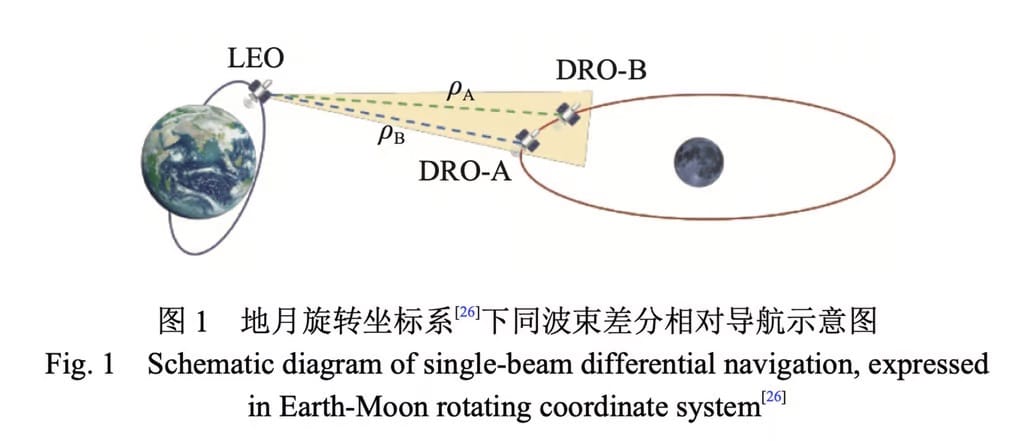
The Chinese Academy of Sciences (CAS) has managed to have the DRO-A and DRO-B twin spacecraft enter their intended lunar distant retrograde orbits (DRO) after all, Ling Xin reports after following up on a tantalizing slide upload on social media. After the (unannounced) March 13 launch of the satellites on a Long March 2C rocket, an upper stage failure left them in Earth orbit instead of Moonward. But it seems that, as was first reported by Andrew Jones, CAS commanded a series of Earth perigee burns to raise their orbits, and then put them in lunar DRO anyway.
While this remedy consumed more fuel than nominally expected and will reduce the mission duration and/or its achievable objectives, it nevertheless means that China has managed to avoid a failure, continuing their uniquely impressive streak of successful lunar missions. DRO-A and DRO-B are a broader part of the in-progress lunar communications and navigation network of Queqiao satellites. They specifically aim to test laser-based navigation and timing between the Moon and the Earth-orbiting DRO-L satellite. China is yet to provide a formal update on the mission though, continuing to be utterly opaque.
Relatedly, in a recent paper published in the Chinese Journal of Space Science, researchers proposed that China should integrate their Queqiao lunar satellites with the existing Earthbound Tianlian ones, which notably serve—among other things—China’s Tiangong space station. As Andrew Jones had highlighted, the proposal’s driving rationale is to substantially improve surface coverage time and area for China’s upcoming ambitious crewed lunar missions leading to a full-fledged Moonbase. It will also ensure redundancy if and when China faces ground station availability issues from its Moonbase partners across the globe.
More Moon
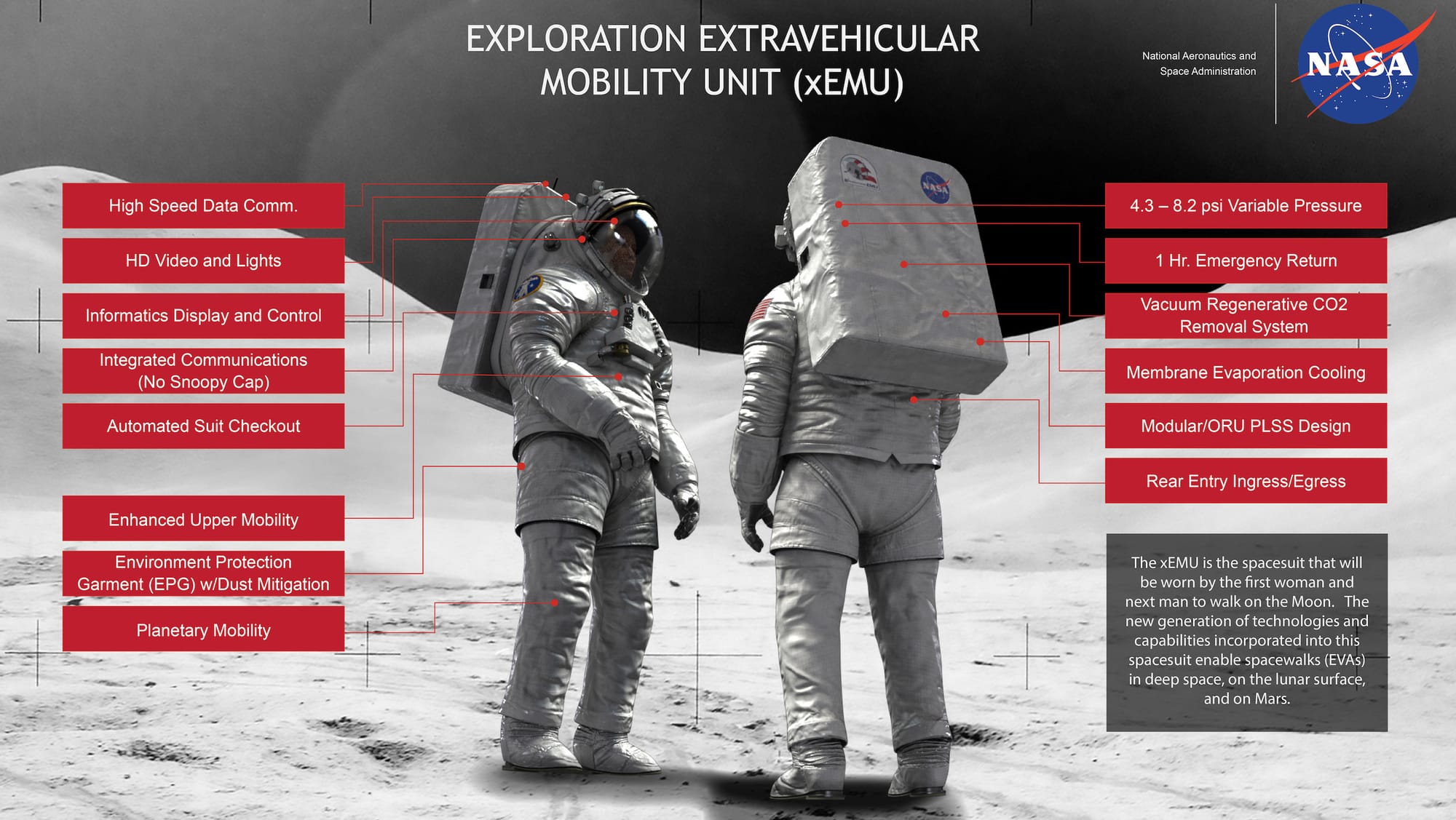
- Axiom Space is partnering with Nokia to add 4G/LTE communications to their AxEMU suit, which astronauts will wear during the crewed Artemis III lunar surface mission later this decade. It will offer astronauts a redundant communication option as well as increased bandwidth for streaming astronaut Moonwalks, which should also help mission scientists on Earth better inform astronauts which rocks to select for inspection and return to Earth. This 4G/LTE demonstration with crew would follow the robotic one on Intuitive Machines’ second Moon mission flying in less than a year as part of NASA’s CLPS program.
- As an aside, Axiom has been testing how well the AxEMU suits could allow astronauts to perform tasks related to handling samples on the Moon. Chosen competitively, the suits offer enhanced mobility than the current EMU suits used in Earth orbit. They also sport upgraded insulation and cooling for the harsh lunar polar environment, a back hatch to climb into and close the spacesuit by oneself, a HD helmet cam, and even a light band.
- After previously raising $2.5 million in 2023, lunar startup Starpath Robotics has now raised $12 million, Tim Fernholz reports. Starpath has big plans to mine lunar water and soil, extract oxygen from it, and then sell processed liquid oxygen to companies planning to regularly operate hardware at the Moon. The latter could include, after end of decade, Blue Origin with its Blue Moon lander as well as SpaceX with its upgraded Lunar Starship. The company says it will use the new capital infusion to build terrestrial demonstrations of their envisioned mining system ahead of building hardware for Luna.
- Following NASA’s selection of three crew-capable Lunar Terrain Vehicle rover proposals for Artemis, and the subsequent release of white papers on lunar mobility and lunar cargo summarizing the agency’s thinking on these key elements shaping their Moon to Mars architecture, NASA is now asking the industry to conduct studies for an integrated end-to-end solution for managing, transporting, and disposing surface cargo part of future habitats or active sites. With such a consultative process, NASA hopes to optimally refine its Moon to Mars Objectives and the strategies employed to achieve them.
This month I’ve received reader donations for my Moon Monday blog & newsletter from space enthusiasts in 4 countries: the US, Australia, India, and the UK. I love serving a genuinely international audience, and will keep doing it. If you too find value in my writings, see and join all supporters here. 🚀🌗
